Visitez Ostende en 2 jours
20 POIs incontournables, parcours optimisés et anecdotes.
Chargement de la carte...
Vous allez visiter les plus beaux points d'intérêt de Ostende
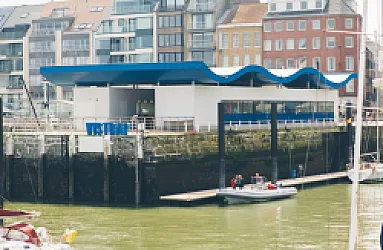
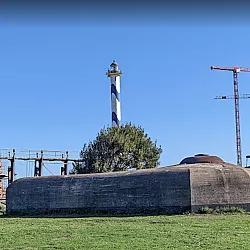

.jpg/320px-PPkerk(01).jpg)

.jpg/320px-Oostende.bloemenuurwerk(01).jpg)
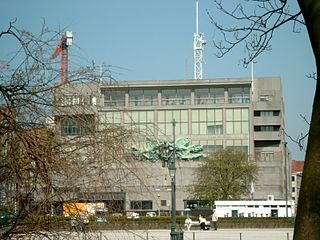


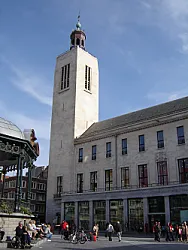






2 Days in Ostend — Coastal charms and hidden stories
Ostend stole my heart the moment I smelled salty air and heard gulls argue above the promenade. Often called the "Queen of the Belgian sea," the city mixes seafaring grit with surprising elegance. Some say it's overrated, but I found its quiet piers and lively fish stalls utterly irresistible. I visited with a small backpack and a big appetite for discovery, and I left feeling like I had found a secret friend.
Why visit Ostend? Beyond the headline sights, it's a city of textures and moments. You will wander from wind-swept beaches to intimate museum rooms. Taste fresh shrimp croquettes at a seaside stand. Hear the creak of wooden decks on the Mercator and feel history under your feet at the National Monument to the Sailors. The Vistrap market pulses with color and chatter. This short trip promises brisk sea air, cozy cafés, and the odd unexpected sculpture that stops you in your tracks.
Planning can feel overwhelming. There is so much to see that you could easily stay for weeks. If you're visiting for the first time, you might worry about missing the highlights. I get it. Time is tight and choices feel heavy. That’s why this concise Ostend itinerary is built for people who want to taste the best parts quickly. Below, I’ll show you exactly how to spend two days to maximize your time and feel like you really experienced the city.
Key tip: Visit outdoor highlights early or late in the day to avoid crowds and catch the best light. Mornings give empty promenades and softer photos. Evenings bring golden light on the Mercator and quieter waterfront dinners. This matters because pacing matters here; you want to savor, not rush. Pack a light jacket, wear comfortable shoes, and bring curiosity. Now let's dive into the itinerary!

Quick Mini Guide to Ostend
Where to stay:
- Promenade / Kursaal area — immediate beach access, evening restaurants and the Equestrian statue of King Leopold I within short walk.
- Near Vistrap (harbour) — best for early-morning fish market atmosphere and seafood stalls.
When to visit:
- Late spring–early autumn for beach weather; shoulder months (May, September) for fewer crowds and calmer winds.
- Mornings for Vistrap activity and afternoons for Mercator ship and seaside promenades.
Things to do:
- Vistrap fish market — arrive early to watch landings, buy fresh North Sea shrimp and mussels.
- Walk the seawall to the National Monument to the Sailors for sunset views and maritime history.
- Visit the Mercator (historic training ship) moored as a museum; combine with the nearby Equestrian statue of King Leopold I photo stop.
- See the Altar in St. Peter and St. Paul’s Church — notable local religious art and architecture.
- Book an interactive tour: Secrets of OSTEND for local stories or The Walter Case OOSTENDE for a detective-style evening investigation.
Don't forget:
- Windproof jacket and layered clothes — coastal weather changes fast.
- Cash/coins for market stalls, and comfortable shoes for cobbled streets and pier walks.
Jour 1 - Ostende
10 POIs à découvrirJour 1 - Matin à Ostende
5 Points d'intérêt - Durée : 4h15 - Distance : 1.6 km - Marche : 0h21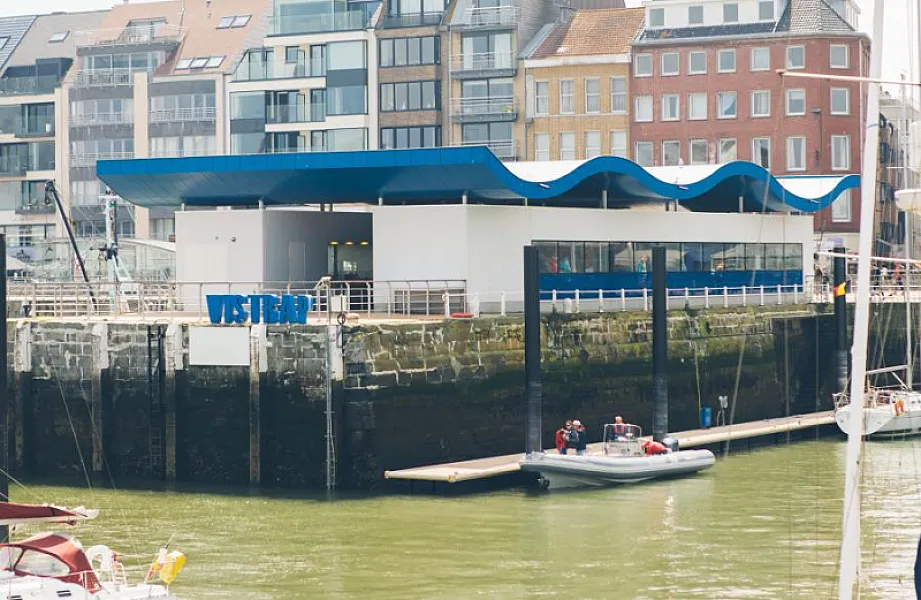
Vistrap
- Le Vistrap est un marché aux poissons en plein air situé sur le quai nord du port.
- Il a vu le jour au cours du 19e siècle lors de l'agrandissement du port.
- Lors de la construction des quais vers 1850, un escalier a été construit pour accéder directement aux bateaux de pêche qui arrivaient.
- Cet endroit, connu sous le nom de "de vistrap" (= les escaliers à poissons), permettait aux pêcheurs de vendre leurs prises et contribuait au charme du front de mer d'Ostende.
- Le " Stadsmuseum ", installé dans l'ancienne résidence de Léopold Ier, présente les conditions de vie difficiles et l'exploitation subie par les pêcheurs à la fin du XIXe siècle, bien qu'Ostende soit l'un des principaux ports d'Europe.
- Le Vistrap a fait l'objet d'une rénovation en 2006 pour se conformer aux nouvelles réglementations de l'Agence fédérale pour l'alimentation.
- La rénovation a principalement porté sur les espaces des vendeurs, remplaçant les zones d'exposition en bois et en pierre brute par de la pierre bleue, du granit ou de l'acier inoxydable.
- En mai 2015, l'ancienne vistrap a été démolie et remplacée par un nouveau bâtiment, achevé en avril 2016.
- Pendant cette période, le marché aux poissons a fonctionné à partir de cabines de plage.
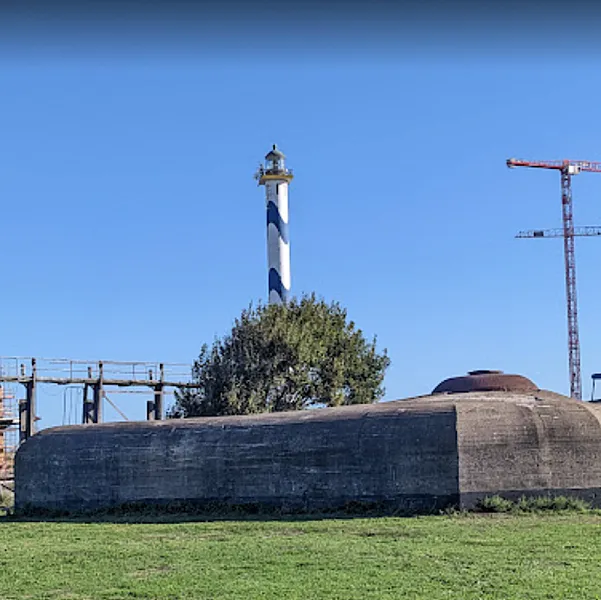
Bunker allemand - Regelbau 633
- Le bunker a été baptisé R633 d'après son plan de construction standard ou son numéro de "Regelbau".
- Il sert actuellement de vestiaire pour les gardes de l'écluse.
- Il est l'un des seuls 21 bunkers de ce type jamais construits, et est également le seul en Belgique.
- Son objectif principal était de faire feu sur la plage, la batterie Hundius, le site Flak, le bunker Schnellboot et toute la zone portuaire.
- Il était équipé d'un mortier de 50 mm d'une portée maximale de 750 m, logé sous une tourelle en acier blindé (le mortier a aujourd'hui disparu).
- Il servait de logement pour 15 soldats, de magasin à munitions pour les obus de mortier et d'atelier.
Station OOSTENDE
- La première gare a ouvert en 1838, et la gare néoclassique actuelle a été construite en 1913, reliant les trains et les ferries, en utilisant des matériaux comme le granit écossais, la pierre bleue et le calcaire. La gare d'Ostende est une plaque tournante importante, avec des trains InterCity reliant Bruges, Gand-Saint-Pierre, Bruxelles-Sud, Liège-Guillemins, Anvers, Courtrai, et plus encore. Ostende sert de plaque tournante majeure pour le Kusttram, le tramway côtier géré par De Lijn. Regie voor Maritiem Transport exploitait des ferries reliant le port de Douvres, mais ces services ont cessé en 1994.
.jpg)
Église Sint-Petrus-en-Paulus de Oostende
- La Sint-Petrus-en-Pauluskerk a été construite pour remplacer la Sint-Pieterskerk, détruite par un incendie le 14 août 1896.
- Le roi Léopold II avait des projets pour la construction de l'église, mais s'est heurté à la résistance du doyen de l'époque.
- Des rumeurs suggéraient que le roi pourrait en savoir plus sur l'incendie qui avait détruit l'église précédente.
- La nouvelle église a été construite dans le style néogothique entre 1899 et 1905.
- Elle fut conçue par Louis Delacenserie, l'architecte de la ville de Bruges.
- L'église a été construite en pierre de Meuse, un type de pierre qui était également utilisé par les Romains pour la construction de leurs villas.
- L'église, qui mesure 70 mètres de long et 36 mètres de large, a un plan basé sur la croix latine, la nef centrale étant légèrement plus haute que les deux nefs latérales.
- L'église a été solennellement inaugurée le 4 septembre 1905 en présence du roi Léopold II et de nombreux dignitaires, mais n'a été consacrée que le 31 août 1908 par l'évêque de Bruges, Waffelaert.

Amandine
- Le 'O.129 Amandine' est un chalutier à gros traits lancé en 1962, pêchant dans le sud de l'Islande en été et dans la Manche et la mer du Nord en hiver.
- En 1974, l'Amandine a fait la transition pour devenir un vrai navire islandais.
- Le 3 avril 1995, l''Amandine' a fait son dernier voyage à Ostende, marquant la fin de l'industrie de la pêche islandaise dans la région.
- Le 14 mai 2000, le navire a été placé sur la terre ferme devant la station à l'aide de deux grandes grues lors de la première édition d'Ostende à l'Ancre.
- Le constructeur naval Richard Panesi a d'abord désapprouvé, considérant qu'il s'agissait d'une honte, mais il a ensuite reconnu le bon travail effectué sur le navire.
- L'" Amandine " sert maintenant de musée sur les Islandais, mais il est actuellement fermé pour rénovation.
Jour 1 - Après-midi à Ostende
5 Points d'intérêt - Durée : 3h45 - Distance : 1.1 km - Marche : 0h14Monument national aux marins
- Ce Monument national pour les marins est un hommage aux pêcheurs, marins et soldats qui ont perdu la vie en mer Il a été conçu par Willy Kreitz et érigé en 1953-1954 sur le site de l'ancien phare d'Ostende Le monument représente un marin au sommet regardant avec confiance vers la mer, un marin en deuil en bas, et des ancres en bronze avec des inscriptions sur les côtés.
- Le positionnement des deux statues de marins crée un élément interactif avec la mer toute proche.
- Une cérémonie annuelle de bénédiction de la mer a lieu au monument, où un service de prière et des bénédictions sur la mer sont offerts à partir d'un navire de la marine belge.

Casino-Kursaal
- Le premier "Kursaal" à Ostende a été établi dans la mairie au début du 19ème siècle.
- Il disposait d'une grande salle utilisée pour les concerts et les bals, mais elle fut finalement jugée trop petite.
- En 1852, un nouveau bâtiment de kursaal fut construit sur la Wapenplein.
- Il s'agissait d'une structure temporaire en bois conçue par l'architecte Hendrik Beyaert, qui comprenait une salle de concert et des kiosques extérieurs pour les concerts.
- En raison de contraintes d'espace, le kursaal a subi des rénovations en 1858 et 1865.
- La rénovation de 1865 comprenait une nouvelle feest- en concertzaal (salle de fête et de concert) au toit de verre.
- Un second kursaal a été construit à un autre endroit en 1883.
- Conçu par Felix Laureys et Joseph Naert, il avait un style classiciste-éclectique et a accueilli des concerts et des récitals pendant deux décennies.
- D'importantes rénovations ont eu lieu entre 1898 et 1906 sous la direction de l'architecte Alban Chambon.
- Le bâtiment a été progressivement reconstruit chaque année pendant la saison hivernale, résultant en un intérieur somptueux avec des décorations en marbre, bois, granit et mosaïque.
- Le kursaal a été détruit pendant la Seconde Guerre mondiale par les occupants allemands, qui l'ont remplacé par des emplacements de canons et un complexe de bunkers.
- L'actuel Casino-Kursaal Oostende, le troisième kursaal, a été reconstruit après la guerre sur la base d'un design moderniste de l'architecte Léon Stynen.
- Il incorporait des faces de verre incurvées et des techniques de construction innovantes telles que le béton armé.
- Le Casino Ostend, l'espace de jeu, est situé dans le Kursaal mais fonctionne de manière indépendante.

Lafayette Music Bar
- Lafayette est connu pour ses offres musicales diversifiées, y compris soul, blues, jazz, reggae, ska, chansons, popcorn et une sélection de classiques rock & ; pop - Soul Ostendaise.
- Ils servent jusqu'à 69 bières et 62 types de spiritueux, 14 cocktails différents Ils sont ouverts 7 nuits par semaine !Les bières et les alcools sont très variés.

Place d'Armes
- Cette place a été construite au 15e siècle, et est la plus ancienne place d'Ostende L'hôtel de ville a été détruit par les Anglais en 1489 mais a été reconstruit en 1496.
- Après le siège d'Ostende en 1601-1604, un nouvel hôtel de ville fut construit sur le côté sud de la place Wapenplein, suivant son tracé actuel.
- L'hôtel de ville fut de nouveau détruit lors du siège anglais d'Ostende en 1706 et fut remplacé par un nouveau bâtiment conçu par Augustijn J.
- En 1887, une grande salle de casino et le Musée des Beaux-Arts furent établis dans les locaux de l'hôtel de ville.
- À la fin du XIXe siècle, le Kiosque fut construit à la suite d'une pétition des habitants pour avoir un bâtiment de musique permanent sur la place.
- Conçu par l'architecte Theobald Van Hille, le Kiosque présente un style éclectique, avec huit colonnes élancées en fonte et des balustrades provenant d'un précédent Kiosque pour améliorer l'acoustique.
- Les quatre liers du dôme sont dédiés aux compositeurs Grétry, Wagner, Rossini, et Gounod.
- Malgré les destructions causées par la Seconde Guerre mondiale dans la ville, le Kiosque est resté intact et a ensuite été protégé en tant que monument reconnu en 1981.
- Le Kiosque a connu son prime pendant les mois d'été de 1898 jusqu'aux années 1960, accueillant un festival de musique populaire appelé le "Festival Permanent" avec des représentations de groupes de musique locaux et étrangers.
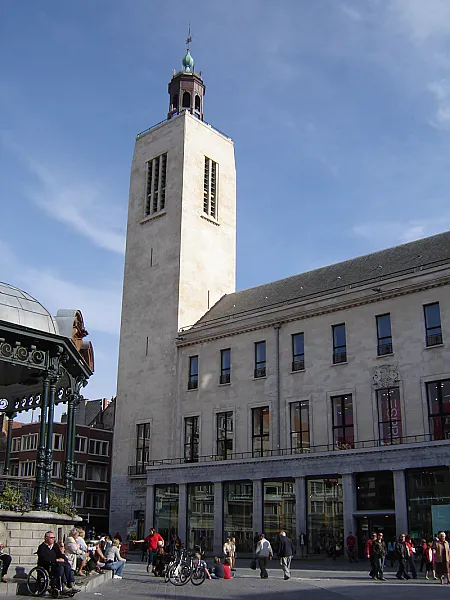
Feest- en Kultuurpaleis
- Le Feest- en Kultuurpaleis a ouvert ses portes après une importante rénovation en mars 2007 et abrite 17 boutiques, dont certaines succursales de grandes chaînes de magasins internationales.
- Les plus anciennes traces d'un hôtel de ville dans ce quartier remontent à 1418.
- Après sa destruction pendant la Guerre, l'hôtel de ville a été reconstruit sept ans plus tard.
- En 1837, certaines salles de l'hôtel de ville sont transformées en casino.
- Dès 1861, une bibliothèque est également installée dans le bâtiment.
- Pendant la Seconde Guerre mondiale, l'hôtel de ville et la bibliothèque ont été complètement détruits, ainsi que les archives de la ville.
- En novembre 1954, la construction d'un nouveau bâtiment a été approuvée sur le terrain de l'hôtel de ville détruit.
- Il comprenait une salle de réception, une salle des fêtes, une bibliothèque, un musée et une petite salle de théâtre.
- Un nouveau carillon, composé de 49 cloches en bronze, a été installé en 1965 après que l'ancien ait été détruit pendant la Seconde Guerre mondiale.
- La plus grosse cloche, nommée Léopold I, pèse 2250 kg.
Jour 2 - Ostende
10 POIs à découvrirJour 2 - Matin à Ostende
5 Points d'intérêt - Durée : 4h00 - Distance : 1.8 km - Marche : 0h23
Mercator
- Le Mercator est un navire-musée.
- Il a été construit en 1932 chez Ramage and Ferguson Ltd à Leith, Écosse.
- Le navire a été lancé le 5 septembre 1932, et est devenu opérationnel le même jour.
- Son port d'attache est Ostende.
- Le Mercator est la propriété de l'État belge.
- C'est un trois-mâts barkentine, servant de navire-école.
- Le navire mesure 78.40 mètres de long, 11,09 mètres de large, et a un tirant d'eau de 4,50 mètres.
- Il a un déplacement de 778,86 tonnes et est propulsé par un moteur auxiliaire de 500 chevaux.
- Le Mercator possède 15 voiles d'une surface totale de 1600 m², permettant une vitesse de 13 nœuds (24 km/h).
- Le navire avait un équipage de 150 membres.
- Le Mercator a servi d'ambassadeur de la voile, a participé à des courses et a transporté des objets notables, notamment deux "moai" de l'île de Pâques et la dépouille du père Damien.
- Pendant la Seconde Guerre mondiale, le navire a été réquisitionné par l'Amirauté britannique et utilisé comme navire de dépôt sous-marin.
- Depuis 1961, le Mercator a été transformé en navire-musée et est amarré à Ostende, à l'exception de quelques voyages.

Statue équestre du roi Léopold Ier
- La statue en bronze du roi Léopold Ier a été dévoilée en 1901 en présence du roi Léopold II, de la princesse Clémentine et du prince Albert.
- La statue présente une tête légèrement inclinée du cheval et un mouvement de rotation du roi, ajoutant une touche dramatique à son apparence.
- La statue est considérée comme la plus ancienne structure subsistant sur la place, les maisons d'origine ayant été remplacées par des immeubles modernes.
- Le roi Léopold II a inauguré le monument en 1905 avec grandeur.
- En 1867, la statue de Léopold Ier, ainsi que celle d'Ambiorix de Tongres, furent présentées à l'Exposition universelle dans le Jardin belge à Paris.
Hôtel de ville d'Ostende
- L'ancien hôtel de ville et les archives municipales d'Ostende ont brûlé pendant la Seconde Guerre mondiale dans la nuit du 27 au 28 mai 1940.
- La construction du nouvel hôtel de ville d'Ostende a commencé en 1956 sur un site différent.
- L'architecte Victor Bourgeois a conçu le nouvel hôtel de ville, tandis que l'intérieur a été réalisé par l'atelier d'art De Coene.
- Les services de la ville ont été temporairement hébergés dans le nouveau palais de justice pendant la construction de l'hôtel de ville.
- L'ensemble a été officiellement inauguré et mis en service en 1961.

La Grande Poste
- � Cetancien bâtiment central de la poste à Ostende, connu sous le nom de "De Grote Post" (= La Grande Poste), a été conçu par l'architecte Gaston Eysselinck et achevé en 1953.
- Le nouveau a remplacé le précédent bâtiment de la poste, qui a été détruit pendant la Seconde Guerre mondiale et qui était situé au même endroit.
- La construction du bâtiment d'après-guerre a commencé en septembre 1947 et a connu des retards et des problèmes.
- La décision de ne pas exécuter une sculpture de Jozef Cantré, que l'architecte considérait comme faisant partie intégrante du bâtiment, a suscité la controverse.
- La sculpture a finalement été ajoutée dix ans plus tard, en 1963.
- Le bâtiment a fait l'objet d'une restauration et d'une rénovation en différentes phases, préservant les parties protégées tout en incorporant de nouveaux éléments.Il abrite désormais des salles de théâtre, des espaces pour expositions et des ateliers.
- Chaque été, ils organisent également Theater at Sea (Theater Aan Zee=TAZ), un festival des arts de la scène avec des représentations dans et autour du Grote Post.
.jpg)
Parc Léopold
- Le Léopold Park d'Ostende a été conçu par Louis Fuchs dans le style d'un parc anglais.
- Le parc a été partiellement construit sur les anciens murs de la ville. Il fut commencé en 1861 et achevé en 1870.
- Deux pavillons d'abreuvement furent construits dans le parc en 1859 après la découverte de deux sources d'eau.
- Le parc comporte un kiosque à musique en bois datant de 1885 où ont lieu des représentations musicales.
- Une horloge florale a été installée en 1933 et est décorée de 15 millions de fleurs et plantes chaque année.
- Le parc Léopold présente diverses œuvres d'art le long d'un parcours de sculptures, notamment les têtes allégoriques de Leo Copers et la sculpture en bronze " Hoop " de Jacky De Maeyer.
Jour 2 - Après-midi à Ostende
5 Points d'intérêt - Durée : 4h00 - Distance : 1.5 km - Marche : 0h20
Altar
- "Altar" est une installation artistique créée par Kris Martin et située sur la plage d'Ostende.
- L'installation présente un cadre vide qui sert de "fenêtre" à la mer.
- La vue à travers le cadre change en fonction de la proximité du spectateur, créant ainsi un tableau vivant dynamique.
- Altar a été conçu par Martin pour l'exposition "De Zee" (La mer) à la demande de Jan Hoet.
- Le travail de Kris Martin consiste souvent à transformer et à se réapproprier de vieux objets.
- Kris Martin souhaite utiliser "Altar" pour souligner le penchant de Jan Hoet pour l'agneau mystique (Lam Gods) et fait indirectement référence à l'exposition de St John's en 2012.
3 gapers
- Le projet d'honorer le roi Léopold II par un monument à Ostende date de peu après sa mort en 1909.
- La statue a été conçue par le sculpteur Alfred Courtens et l'architecte Antoine Courtens.
- Le monument se compose d'une colonne montante avec une statue en bronze de Léopold II à cheval en uniforme militaire, regardant la mer du Nord.
- En 2004, la main d'une statue congolaise a été sciée en protestation contre Léopold II par le groupe d'action " De Stoete Ostendenoare ".
- En fait, cette statue équestre est une falsification complète de l'histoire : Léopold II n'a pas libéré les Congolais de l'esclavage des Arabes.
- Au contraire, il a utilisé les Congolais lui-même comme esclaves pour travailler dans les plantations de café et de caoutchouc. Non seulement un véritable génocide, mais les esclaves qui ne travaillaient pas assez dur avaient les mains coupées. .

Galeries royales d'Ostende
- Les Royal Galleries sont situées sur la digue entre le Chalet royal et l'hippodrome de Wellington.
- Les colonnades mesurent environ 380 mètres de long et se terminent de part et d'autre par un pavillon fermé doté d'un salon.
- L'architecture des colonnes doriques jumelées s'inspire de l'architecture romaine de l'époque de l'empereur Hadrien.
- Les galeries royales étaient destinées à servir de passage vers l'hippodrome pour le roi Léopold II et ses invités de marque, en les protégeant des intempéries.
- La première phase de construction a été financée par une subvention que la ville d'Ostende a reçue en compensation de l'abolition des jeux de hasard.
- Léopold II finança une partie de la seconde phase sur sa fortune personnelle.
- Au sommet du centre et à l'arrière des galeries royales se trouve le Thermae Palace Hotel, construit en 1932-1933 par l'architecte André-Louis Daniëls.
- Les galeries servent de cadre au tableau de Léon Spilliaert "La Nuit", qui fait partie de la collection de l'État belge.

Villa Maritza
- La Villa Maritza a été construite en 1885 sur un projet de l'architecte Antoine Dujardin.
- Elle est l'un des derniers vestiges de l'architecture de la belle-époque sur le front de mer.
- Antoine Dujardin était un architecte important de la Seconde période éclectique et a conçu plusieurs villas de luxe à Ostende.
- En 1996, la Villa Maritza a été inscrite sur la liste des monuments protégés.
- De 1986 à 2011, la Villa Maritza a fonctionné comme restaurant.
- En 2012, le bâtiment a été acheté par l'entrepreneur Bart Versluys pour un projet de rénovation visant à soutenir le patrimoine culturel d'Ostende.

Japanse Tuin
- Le point d'intérêt est un jardin japonais nommé Shin Kai Tei, ce qui signifie " Jardin des profondeurs ".
- Le jardin est situé dans l'ancien parc de la villa royale.
- Combinant plusieurs paysages, le jardin dépeint divers aspects sur une surface relativement petite.
- Le jardin a été conçu par Takashi Sawano.
- Un étang en forme de tortue est un élément central du jardin.
- Le jardin a été inauguré en 2001 par le prince Philippe de Belgique et est librement accessible aux promeneurs.
Where to Stay in Ostend
Where you stay in Ostend matters more than you might expect for a short two-day visit: choosing the right side of town saves precious hours and lets you soak up the sea air without wasting time in taxis. For a compact itinerary that includes the fish market, the historic ship and the seafront monuments, prioritize proximity over pretension — being a 10–15 minute walk from the main sights will turn a busy weekend into a relaxed one. Let your plan hinge on whether mornings on the beach or evenings in the center feel more important to you.
Ostend is pleasantly compact and easy to read: the long Albert I promenade frames the coast, a lively harbour and fish-dock area sits to one side, and the pedestrian city centre with shops, cafés and the main church fills the other. Most landmarks — the quay around the fish market, the statue-lined promenade with the National Monument to the Sailors and the museum ship the Mercator — are all within comfortable walking distance of each other. This tight layout means you can swap plans on the fly without losing half your day to travel.
If you want to be in the thick of the action choose a place near the quay and the Vistrap for early-morning fish markets and lively seafood stalls; it’s ideal if you want to begin days with local flavours. Staying on or just off the promenade near the monument keeps sunsets, the promenading crowd and the Mercator a short stroll away. For quieter evenings and easy access to the church with its notable altar (the city’s historic core and the equestrian statue of King Leopold I are here), pick the City Centre area where cafés and evening life are most concentrated.
Transport around Ostend is straightforward: the central train station sits a short walk from both beach and centre, the coastal Kusttram links neighbouring towns if you fancy a quick excursion, and local buses fill the gaps. If you’re driving, choose accommodation that mentions nearby parking; otherwise you’ll find most attractions walkable and bike rentals plentiful for a breezy alternative.
For two days, aim for convenience over frills. A seafront stay gives you sunrise and fresh air; a centre location keeps restaurants and evening sights within easy reach; a spot a little inland gives peace after a full day. Pick what will make your mornings easiest and evenings happiest, and you’ll leave Ostend feeling like you had time to breathe rather than rush. Safe travels — and enjoy the sea.
Getting Around Ostend
Ostend is wonderfully easy to navigate: it’s compact, flat, and served by a reliable network of De Lijn buses and the coastal Kusttram, with national trains run by SNCB/NMBS into Oostende station. Routes are frequent during the day, many stops are clearly signed in English, and the promenade makes walking between sights a pleasure. Whether you want the convenience of public transport or the fresh-air option of strolling between the harbour and the beach, you’ll find it straightforward and stress-free 🚇.
A practical tip about tickets will save you time: if you plan several short trips grab a day pass, otherwise single tickets work fine for one-offs. You can buy fares on board many buses and trams (card payments are usually accepted), at station machines, or through the De Lijn app and the SNCB app for trains. Don’t forget to validate your ticket or have it active — inspectors do check, and fines are real. Contactless payment is available on some services, which is handy if you prefer quick tap-and-go.
Google Maps is your friend here: it shows tram and bus lines, real-time departures, and walking directions that often combine a short tram ride with a scenic walk. For minute-by-minute accuracy the local De Lijn app can sometimes be better, but Google is excellent for planning door-to-door routes and comparing walking versus tram times 🗺️. I always double-check both if I’m on a tight schedule.
If you want to save money, mix walking with one or two tram hops instead of taking taxis. The coast is gorgeous and many POIs are within a comfortable walking radius, so you’ll save on fares and discover hidden cafés and views. A 24-hour ticket pays off fast if you plan museum visits, a harbour walk, and an evening stroll along the beach — plus it gives you the freedom to hop on and off the Kusttram for little detours.
Personal tip from experience: we arrived near Vistrap, checked the De Lijn app, and chose to walk to the National Monument to the Sailors because it was only about a ten-minute promenade — beautiful and direct. Later, tired and eager to reach the Altar, we bought a quick ticket on the tram, tapped with contactless, and hopped off a short ride later right by the site. The whole outing felt effortless: a little planning, a validated ticket, and you’ll move around Ostend like a local 🎫.
What to Pack for Ostend
Ostend is a compact, walkable city with wide promenades, grand architecture and manor houses to admire — and you’ll spend most of your time outdoors admiring sculptures and facades. I’ve done two-day stints here more than once: one trip I walked roughly 15 miles over two days and was out for 10+ hours each day taking photos, ducking into cafés and circling the seafront. Pack light but smart — here are the essentials that saved me stress and kept me comfortable.
1. Comfortable walking shoes (REQUIRED — e.g., Ecco Soft 7 or Merrell Moab 2): I learned this the hard way after a day on cobbles and promenade tiles — blisters shut my second afternoon down. A supportive shoe with good grip matters because you’ll cover long stretches between landmarks; on my 15-mile weekend, shoes with cushioning made the difference between enjoying a museum façade and limping back to the hotel.
2. Weather-appropriate clothing for Ostend (windproof layer + thin thermal): The North Sea wind bites even in late spring. On one chilly evening I was glad I’d packed a light windbreaker and a thin merino layer — without them I would have cut a planned manor-house walk short. You want layers: sun then breeze then possible spit of rain within a single afternoon.
3. Cross-body bag (anti-theft, water-resistant): I carry a small cross-body every time I travel coastal cities. Ostend’s esplanade and markets are crowded at peak times; having a zipped, close-to-body bag kept my wallet and phone safe while I photographed sculptures. It’s hands-free for sandwiches and maps, and I’ve never once worried about pickpockets when it’s snug against me.
4. Power bank (e.g., Anker 20,000 mAh): I was shooting architectural details and using maps all day — my phone would have died by noon without a 20,000 mAh bank. One of these typically gave me two full charges, so I could be out for 10+ hours taking photos and using transit apps without hunting for an outlet.
5. Travel power adapter (Type E for Belgium): Belgium uses Type E plugs (230V). On my first trip I forgot the adapter and wasted time at a hotel store — not fun when you need a charge before a late dinner. Bring a compact adapter so you can top up devices between explorations.
6. Optional: Packable umbrella or lightweight scarf: I alternate these depending on season. A tiny umbrella handled a sudden shower once; a large scarf doubled as a wind buffer and picnic blanket another time. Either one is small but can rescue a soggy or chilly afternoon by the sea.
Enjoy Your Trip to Ostend!
Packed with seaside charm and surprising culture, this two-day itinerary guides you through 15 must-see spots in Ostend. From the bustling Vistrap to the poignant National Monument to the Sailors and the sculptural Altar, you’ll get a taste of landmarks, historic architecture and lively urban life—everything you need for a short, unforgettable city break.
Remember, this is a GUIDE, not a rigid schedule—please leave room for the unexpected. The true magic of Ostend often happens in unplanned moments: getting pleasantly lost among manor houses, stumbling on a street sculpture, or lingering at a café for a view of the promenade. Don’t pressure yourself to see EVERYTHING; savor a slower pace and let spontaneous discoveries shape your two days.
I hope you feel excited to explore—the mix of landmarks, theatres and seaside moments is pure joy. I’m excited for you to stand at the National Monument to the Sailors, taste local life at Vistrap and admire the Altar at sunset. You’re going to love Ostend and create unforgettable memories!
Want to make discovery playful? Check out Coddy’s interactive, gamified tours—Secrets of OSTEND and The Walter Case OOSTENDE—to turn exploring into a small adventure. They’re a fun way to uncover hidden stories and solve clues while seeing the city.
Have questions or a story to share when you return? I’d love to hear about your favorite spots and photos. Safe travels! Have fun!
Envie de plus d'aventure ?
Découvrez nos jeux d'évasion urbains pour transformer votre visite en aventure interactive !













